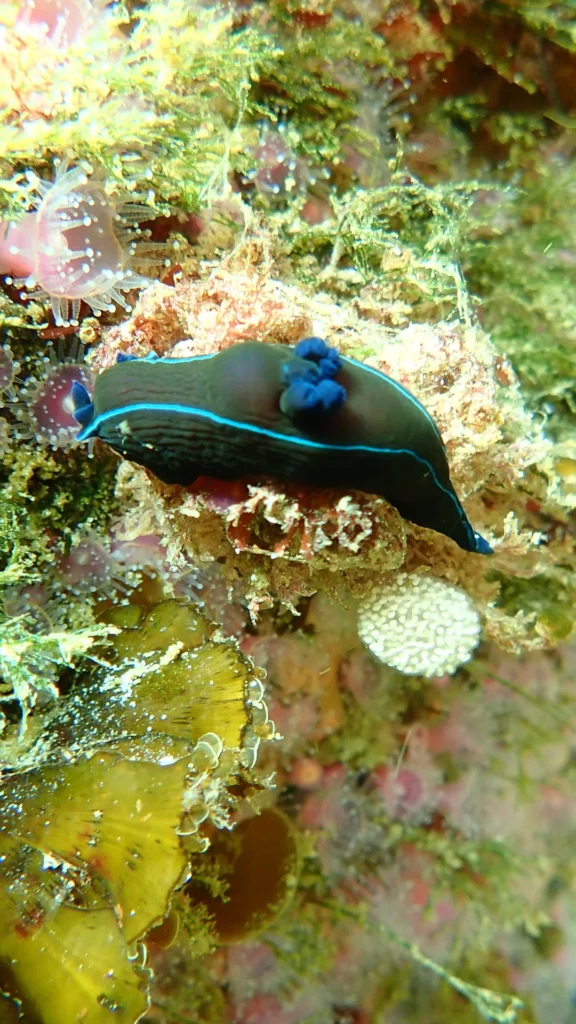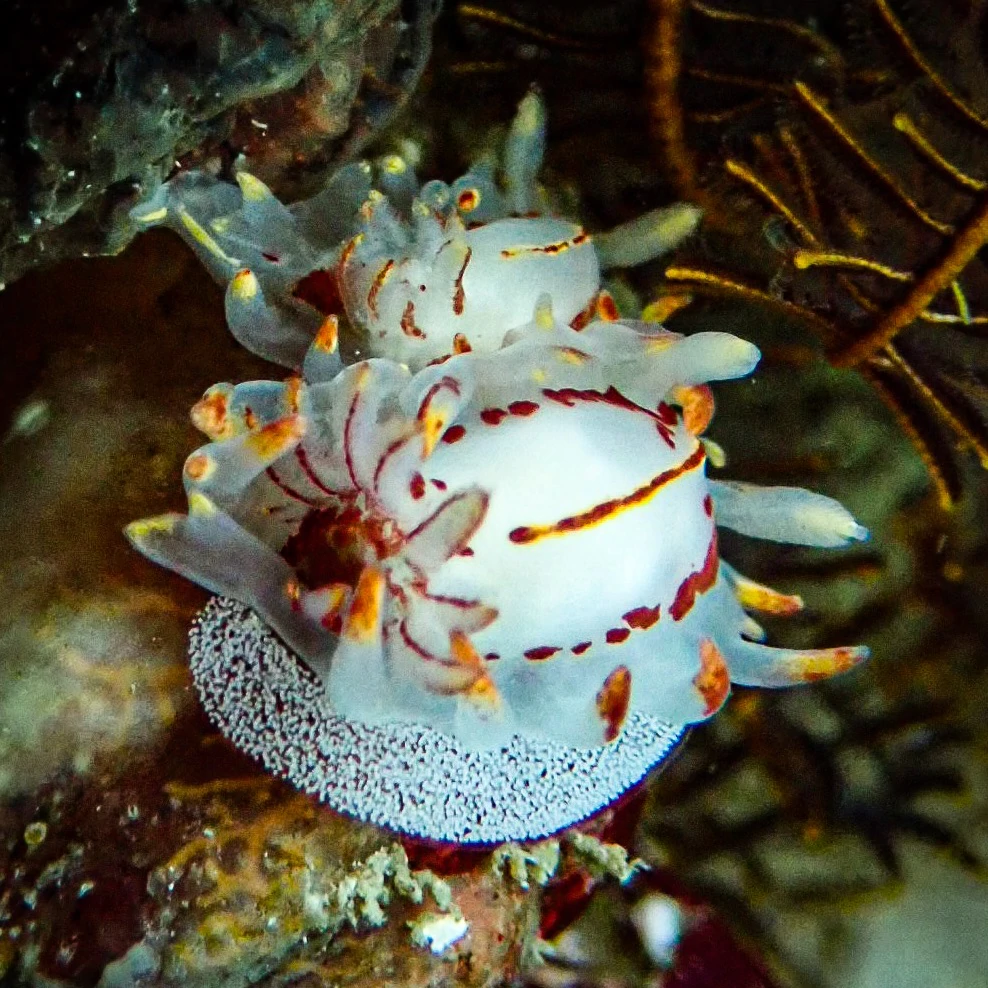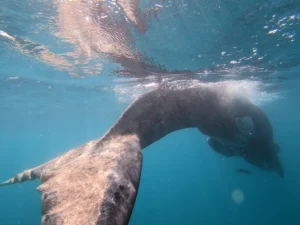Despite their small stature, nudibranchs cause great excitement amongst the diving community of the Cape Peninsula. Their vibrant colours and fascinating physiology lodge these gastropod mollusks as firm favourites on many freediving photographers’ lists.

Nudibranchs can be found in oceans across the globe, with new species discoveries taking place regularly. There are over 3000 species described worldwide, roughly 75 of which have been recorded in the Cape Peninsula. Most species are benthic, meaning they move about on reefs or other structures, and crawl rather than swim. The majority of nudibranch species are found in shallow temperate waters. However, there are always exceptions to the rule, and this diverse group sees species occurring within harsher habitats of the Arctic and Antarctic, as well as at depths greater than 2000m.

Known commonly as sea slugs, their scientific name Nudibranchia is descriptive of their ‘naked gills’, which are present on the animals’ backs. Unlike many other marine gastropods, nudibranchs do not have shells. Their soft bodies come in a plethora of shapes, colours and sizes. The nudibranchs are represented by a great diversity of species, with the smallest Doto less than 15mm in length and the largest Spanish dancer reaching sizes of up to 60cm in length.

Nudibranch eyes are minuscule and rudimentary, so they rely upon two ‘horns’ situated on their heads known as rhinopores. These sense organs enable the nudibranch to navigate its environment through chemosensory cues. Nudibranchs use their rhinopores to prey on anemones, sponges, algae, corals, and other nudibranchs, with prey preference depending on species. Nudibranchs get their colouring from the prey they consume, which aids in camouflage.

As they have evolved without the protection of a hard shell, alternative means of defence are essential. By retaining the toxins from their prey, nudibranchs secrete defensive mucus to deter predators. Furthermore, a specialist group of nudibranchs, known as aeolids, harness the stinging cells of prey items such as anemones, jellyfish and corals and use them for their own protection. These cells, known as nematocysts, are tiny barbs that are fired from the cell, not dissimilar to harpoons and are excellent predation deterrents. Aeolids have physiological adaptations to withstand the cells as they move through the digestive tract. After that, they are stored in the rear of the animal until needed.

During their larval stage, nudibranchs are planktonic. Their lifespan is largely variable, with some species living only a few weeks, while others up to a year. Nudibranchs are hermaphroditic and contain both female and male sex organs. They do however require a mate, as they are unable to self-fertilise. After cross fertilisation, both nudibranchs proceed to lay eggs. As with most characteristics, nudibranch eggs are highly variable and species-specific. Some species may lay only one egg, while others a few million.
Kelp forest snorkeling in Cape Town is even more fun when hunting for nudibranchs to photograph. Some of our favourite sites for finding ‘nudis’ are Windmill Beach and A-frame. Finding these colourful creatures is a bit like stamp or card collecting. Once you start looking for them, you won’t be able to stop trying to find them all.



